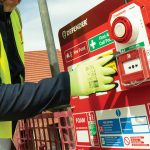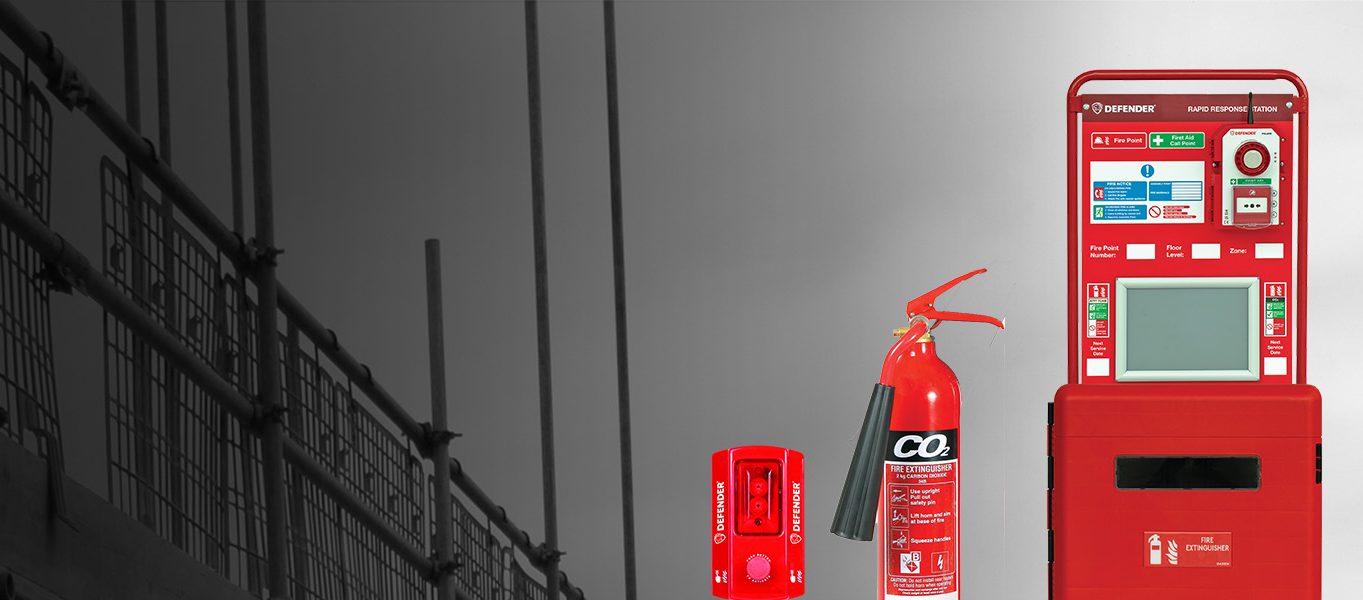

Construction sites are inherently high-risk environments, with heavy machinery, flammable materials, and temporary structures creating the perfect conditions for fires. In the UK, the Joint Code of Practice sets critical standards to reduce risks and promote safety.
Whether you’re a site manager, contractor, or worker, understanding fire safety in construction is not just a legal obligation but a moral responsibility to protect lives and property.
Fires on construction sites can be caused by various factors, often due to the dynamic and hazardous nature of the environment. Here are the most common fire risks:
On a construction site, you’ll find various materials like wood and cardboard packaging that are very flammable and can increase the risk of fire. Additionally, paints, adhesives, fuels, and other flammable liquids can easily catch fire if they’re not stored or managed correctly. Foam and other insulation materials can also ignite rapidly, releasing harmful smoke. It is recommended that all flammable materials are stored in approved, well-ventilated and secure areas to avoid the risk of fire. All liquids ad materials on a site should be clearly labelled in containers to avoid accidental misuse.
Work on a construction site such as welding, cutting, or grinding can produce sparks that may ignite flammable materials nearby. Additionally, during soldering and brazing, the heat and flames generated can lead to a fire if proper precautions are not taken. It is recommended that safety stations including fire extinguishers are placed nearby.
Construction sites frequently use temporary wiring, which can sometimes result in overloaded circuits or damaged cables, raising the risk of electrical fires. Additionally, the regular operation of portable electrical tools and machinery with exposed wires or overheating parts adds to the fire hazard. Overheated temporary lights can also ignite nearby flammable materials and charging lithium-ion batteries overnight also pose a fire hazard.
Accidental fires can occur on construction sites due to the improper use of temporary space heaters or blowtorches. Additionally, storing gas cylinders or heating fuel incorrectly heightens the risk of explosions or fires.
Smoking in unauthorised or unsafe areas on a construction site heightens the risk of fire. Discarded cigarette butts left in places with combustible materials can quickly spark a blaze. It is recommended that all sites have a designated smoking area far from flammable materials that are used by all workers.
On a construction site there is often lots of scrap or excess materials. Improperly disposing of flammable or reactive materials can result in dangerous fires. If wood scraps, packaging materials, and dust piles are not regularly removed, they can easily ignite and contribute to a fire hazard.
An unsecured site is more vulnerable to arson. Intruders may deliberately set fires or damage equipment so it’s essential for all sites to be properly secured.
Spills from equipment such as generators or vehicles can pose a fire risk on the premises. Additionally, gas leaks from cylinders utilised for cutting or heating may catch fire if they come into contact with sparks or flames.
Failure to regularly inspect and maintain tools and equipment on site can result in issues that may trigger fires. When equipment is left running without supervision or is not functioning properly, it can overheat and catch nearby materials on fire.
Take extra precautions in extremely dry, hot or windy weather as these conditions can lead to a quick spread of fire, particularly in open spaces.
Fire protection measures on construction sites fall into two categories: active and passive systems. Both types play a crucial role in reducing risks and handling possible fire emergencies. Additionally, it’s vital to educate all workers about the fire hazards and safety protocols in place. A select group of workers should also receive specialized training to effectively extinguish small fires.
Adhering to established guidelines is vital for reducing fire risks. The Joint Fire Code of Practice UK offers detailed instructions, so it’s important to consistently adhere to the best practices outlined below.
Despite preventive measures, fires can still occur. Knowing how to respond can make a critical difference:
Fire prevention on construction sites is a shared responsibility that demands constant attention, compliance with regulations such as the Joint Fire Code of Practice UK, and commitment to best practices. By ensuring proper fire safety measures, providing comprehensive training, and promoting a culture of awareness, the likelihood of fire incidents can be significantly reduced.
Remember, the cost of negligence is far greater than the effort required to maintain a fire-safe construction site. Invest in fire protection measures, enforce strict safety protocols, and ensure everyone on site knows their role in preventing and responding to fires. Safety isn’t just about compliance – it’s about saving lives.